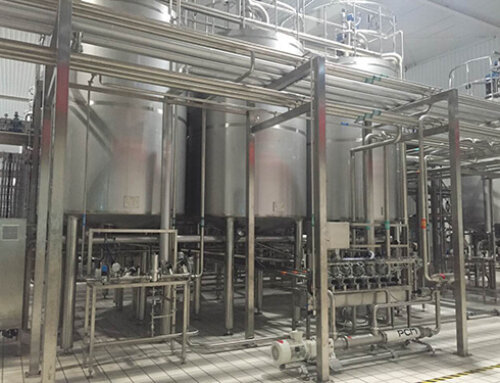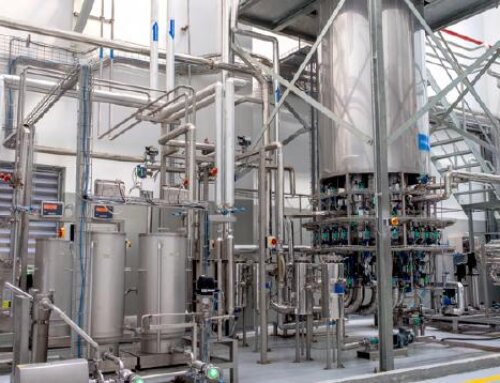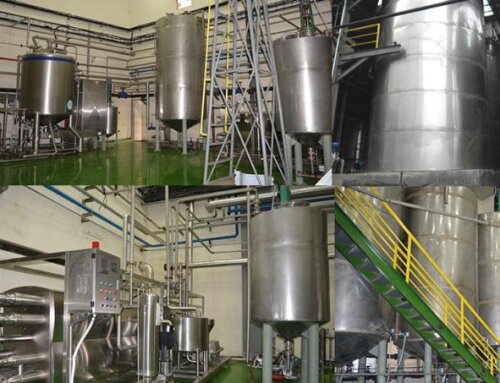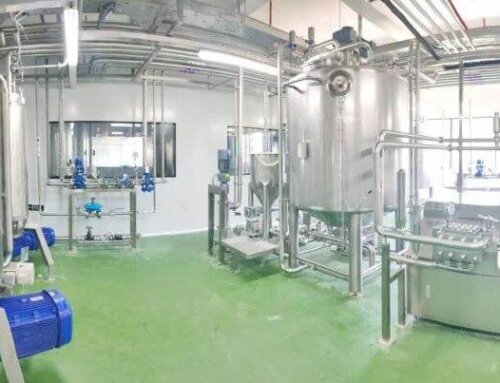Virgin Coconut Oil Processing Line Description
Virgin coconut oil is the main product in the coconut processing line, it is a kind of oil made from fresh and mature coconut meat by mechanical or natural methods without high temperature and chemical methods. so the oil retains its original composition and has a special coconut smell And the taste is well received by consumers. VCO is nutrient-rich vegetable oil with multiple health functions. Its main component is a medium-chain fatty acid (MCFA), which can not only promote the absorption of nutrients in the human body and improve digestion, but also regulate human The blood sugar level in the body is especially important because it can enhance the body’s defense function to avoid being attacked by harmful microorganisms.
Virgin coconut oil (VCO): VCO mainly contains short and medium-chain saturated fatty acids. The content of medium-chain saturated fatty acids exceeds 60%. The content of lauric acid is as high as 50%, and it contains caprylic acid and caprylic acid in an appropriate proportion. Abroad, VCO production is mainly concentrated in the Philippines, Malaysia and Indonesia, which are rich in coconuts. VCO is produced without the use of heat or chemicals, which preserves its natural nutrients and flavor.
The yield rate of VCO can vary depending on several factors, including the quality and freshness of the coconuts, the extraction method used, and the processing conditions:
- The yield rate of VCO from the fresh coconut meat is around 35-40% of the total weight of the meat. For example, if you start with 100 kg of fresh coconut meat, you can expect to produce around 35-40 kg of VCO.
- When you use dried coconut meat or copra (dried coconut meat) instead of fresh coconut meat, the yield rate may be higher(around 60-65%).
The production of virgin coconut oil (VCO) typically involves several machines, including a coconut husker, a coconut meat grinder or shredder, a hydraulic press or screw press for extracting the coconut milk, a settling tank for allowing the oil to separate from the milk, a skimmer for removing the oil from the milk, a filtration system for removing any impurities or particles, and a centrifuge for separating any remaining water or solids from the oil, with some producers also using a pasteurization unit to further ensure the quality and safety of the oil before packaging it into clean, airtight containers.
The capacity of VCO production is from 500L per hour to 5000L per hour, and the machine is made of SUS304 material.
In wet process coconut oil products, the fresh undiluted coconut milk is separated at ambient temperature 35 – 38℃. The oil content in the feed to the first separator stage is up to 35%. An oil recovery of 90% fat recovery which is equivalent to 32% of coconut milk can be achieved. The moisture content of the final oil is less than 0.5%.
In Wet VCO production process, after the coconut milk is separated by the stack centrifuge separator, it will have two products, one the virgin coconut oil, and the other byproduct is skimmed coconut milk, which can be used for food ingredients for products that require coconut flavoring without the fats (including coconut powder, coconut honey, and coconut jam). They can also be used as a base in the production of coconut milk beverages used as milk substitutes.

Virgin Coconut Oil Processing Line End Products
The virgin coconut oil can be filled into 20 liters HDPE kegs, glass jars, PET or glass bottles. The end products should be light yellow or ivory white and store into ambient temperature and protect from the light. The shelf life of VCO can reach to 2-5 years under proper storage conditions.

Virgin Coconut Oil Manufacturer Process
The ripen coconut after dehusking and deshelling, then we get the coconut meat or copra. The fresh coconut meat will be washed and blanched with one air bubble washer. After that, they will be transferred to one coconut pulverizer to smash coconut meat into desiccated coconut. From this process, there are two flowcharts to obtain coconut oil. The first type is dry VCO method, the desiccated coconut will be sent to one dryer to get the dry desiccated coconut, then use one screw conveyor to transfer them into one low-temperature oil extractor, at last we get the oil from the screw extractor, then after the filter, they can be filled into containers; The second type called wet VCO method, the desiccated coconut will be sent to the coconut extractors to get the coconut cream/milk, then through centrifuge separator and tubular separator, we will get the wet VCO and fill into small bottles or jars.

Key Machine Of Virgin Coconut Oil Processing Line
Desiccated coconut dryer
We use belt dryer to dry desiccated coconut from 50% water content to 3-5% water content. The mesh belt dryer is composed of several independent unit sections. The operating parameters of the number of drying media, temperature, humidity and exhaust gas circulation can be independently controlled to ensure the reliability of the dryer and the optimization of operating conditions.

Coconut oil extractor
We can use hydraulic press or screw press to obtain coconut oil. There are two types of extractors for oil press:
The first is ‘hot pressing’: Before squeezing the oil, the oil is cleaned, crushed, and then subjected to high-temperature heating treatment to cause a series of changes in the oil: destroy oil cells, promote protein denaturation, reduce oil viscosity, etc., to be suitable for squeezing oil and increase oil yield. But the crude coconut oil squeezed from the oil after high-temperature treatment is darker in color and higher in acid value. At the same time, high-temperature squeezing of oil causes the biologically active substances (vitamin E, sterols, carotenoids, etc.) in the oil to be greatly lost during the squeezing process, and unsaturated fatty acids are converted into saturated fatty acids, resulting in waste of resources.
The second is ‘cold pressing’: The cold pressing method is processed in an environment below 60℃, and the nutrient components are retained most completely. Because the oil yield of cold pressing method is only half of that of hot pressing method, and the nutrients are kept intact, the market price of most cold-pressed coconut oil is about 1 to 4 times higher than that of hot pressing. The cold-squeezed oil is not damaged, and no additives are needed. It can be stored for a long time only by simple precipitation and filtration.

Coconut oil separator
When separating coconut oil from coconut cream, there are two processes, the first process is using the disk centrifuge separator to separate solids and water from oil, after disk centrifuge separating, the solid content is less then 5%, and then use the tubular centrifuge for the second separation and clarification to get the pure virgin coconut oil. The separated oil is then drained off and collected for further processing, such as filtering or refining. Coconut oil separators can be used in both small-scale and large-scale coconut oil production, and are often used in coconut-producing countries such as the Philippines, Indonesia, and India.
The three-phase centrifuge separator is used to separate the coconut oil and coconut milk, remove solids at the same time, and protein will be separated. The bowl speed can reach to 8000RPM to remove any left-over solids.
The coconut oil separator typically consists of a rotating bowl that spins at high speed, creating centrifugal force. The coconut milk is added to the bowl and the force causes the oil to separate from the milk and collect at the top of the bowl, while the heavier components such as water and solids settle at the bottom.

Low-temperature vacuum drying system(Optional)
The virgin coconut oil (VCO) is obtained after tubular centrifugal separation or low-temperature pressing and filtration, some manufacturers are feeding the oil into a low-temperature vacuum drying system to further reduce the water content in the coconut oil and increase the coconut oil quality and shelf life.
The coconut oil vacuum drying system is mainly composed of three parts: coconut oil and water preheating system, coconut oil vacuum dryer and oil storage system, vacuum pump unit and chilled water system. The main features of the coconut oil vacuum drying system are temperature controllable, thorough drying, safety and sanitation, easy maintenance, customizable output, continuous production, etc.




